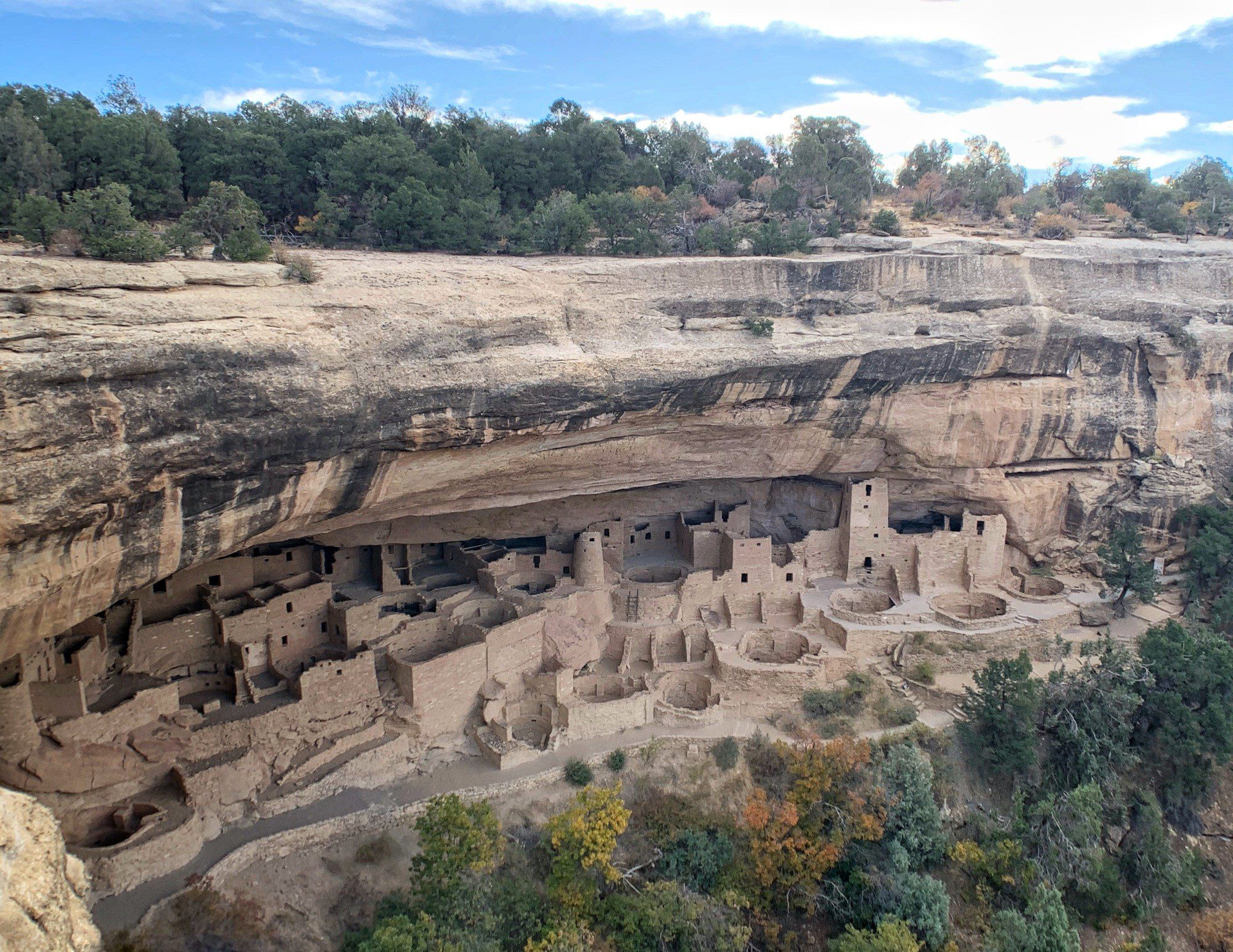If you’re wondering how to save money at National Parks, then you’ve landed in the right spot!
Over the past few years, record numbers of people have visited National Parks across the U.S., and for good reason! They are an absolute national treasure.
This guide has all the ways you can save money in the National Parks so that your National Parks trip doesn’t bust your travel budget. In fact, it’s more than possible for everyone to get out and enjoy the diverse landscapes across the United States without feeling like the cost is too much of a burden.
Keep reading to learn more!
How to Save Money at the National Parks
The National Park Service, established by President Theodore Roosevelt in 1916, is over 100 years old. He believed in preserving the natural beauty found in all four corners of the United States. And I’m so glad he did!
“Here is your country. Cherish these natural wonders, cherish the natural resources, cherish the history and romance as a sacred heritage, for your children and your children’s children. Do not let selfish men or greedy interests skin your country of its beauty, its riches, or its romance.” -Theodore Roosevelt
1. Buy the America the Beautiful (Annual) Pass.
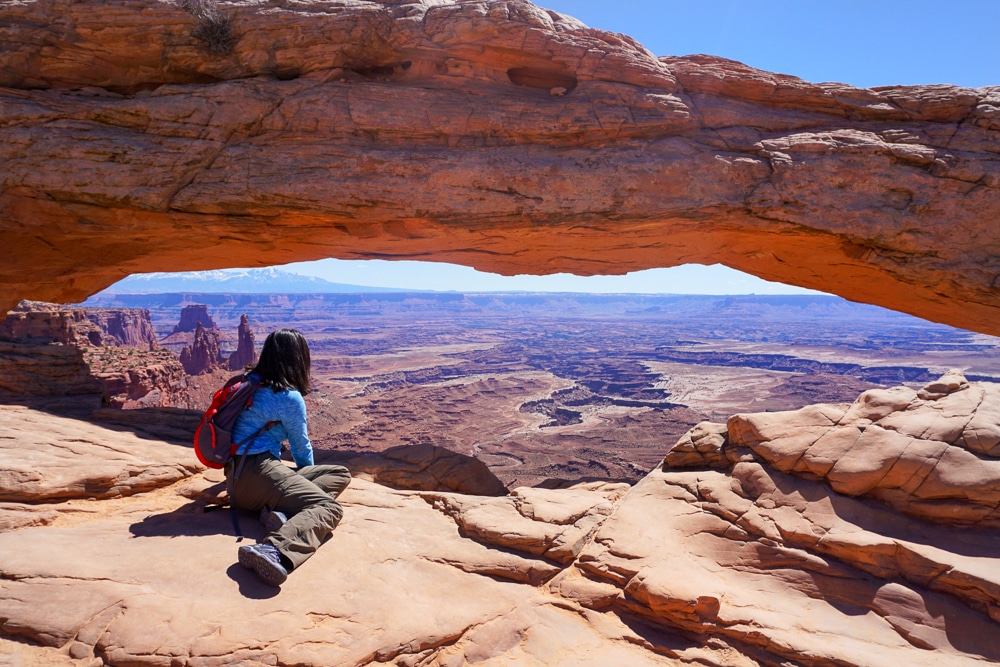
For $80, the America the Beautiful Pass is valid for an entire calendar year. This pass covers the typical entrance fee at National Park Service Sites, as well as at Federal Recreation Sites like those managed by the U.S. Forest Service and Bureau of Land Management.
In addition to official National Parks, pass holders can access Federal Recreation Areas, historical sites, National Forests, National Monuments, and National Wildlife Refuges, to name a few. There are thousands of sites to choose from.
The entry fee for a private vehicle entering a National Park typically costs $25-$35. Children 15 and under are always free. Rates for pedestrians generally cost about $20 per adult depending on which park you’re visiting.
But if you’re planning to visit 3 or more National Parks in a calendar year, then the $80 America the Beautiful Pass will easily pay for itself. For a Utah National Parks road trip where you visit the Mighty 5 and maybe even Grand Canyon National Park, you’ll come out ahead with the annual pass compared to paying for individual park entrances.
I bought the America the Beautiful Pass for a trip to Arches, Canyonlands, Bryce Canyon, and Zion National Parks and saved $50 compared to buying admission at each park separately. The best part is the pass is valid for an entire year and I was able to use it for other trips like hiking in Shenandoah National Park.
2. Visit on One of the Free Entrance Days.

Each year, the National Parks Service designates fee-free days to visit National Parks across the country. Some of these days change slightly depending on the year but they typically sync up with holidays.
- Martin Luther King, Jr. Day
- First day of National Park Week (typically around the 3rd week of April)
- Juneteenth
- Great American Outdoors Act (August 4th)
- National Public Lands Day (typically 3rd or 4th week of September)
- Veteran’s Day
You can also check National Parks by state on this list to know about location-specific fee-free dates.
One thing to keep in mind is that everyone loves free. If you visit a National Park on a fee-free day, expect it to be busy. The good thing though, National Parks are vast spaces and if you’re willing to set off on a hike or spend time in a lesser-visited corner of a park, you can likely put some distance between yourself and the crowds.
3. Get a Free Annual Pass for U.S. Military Service.
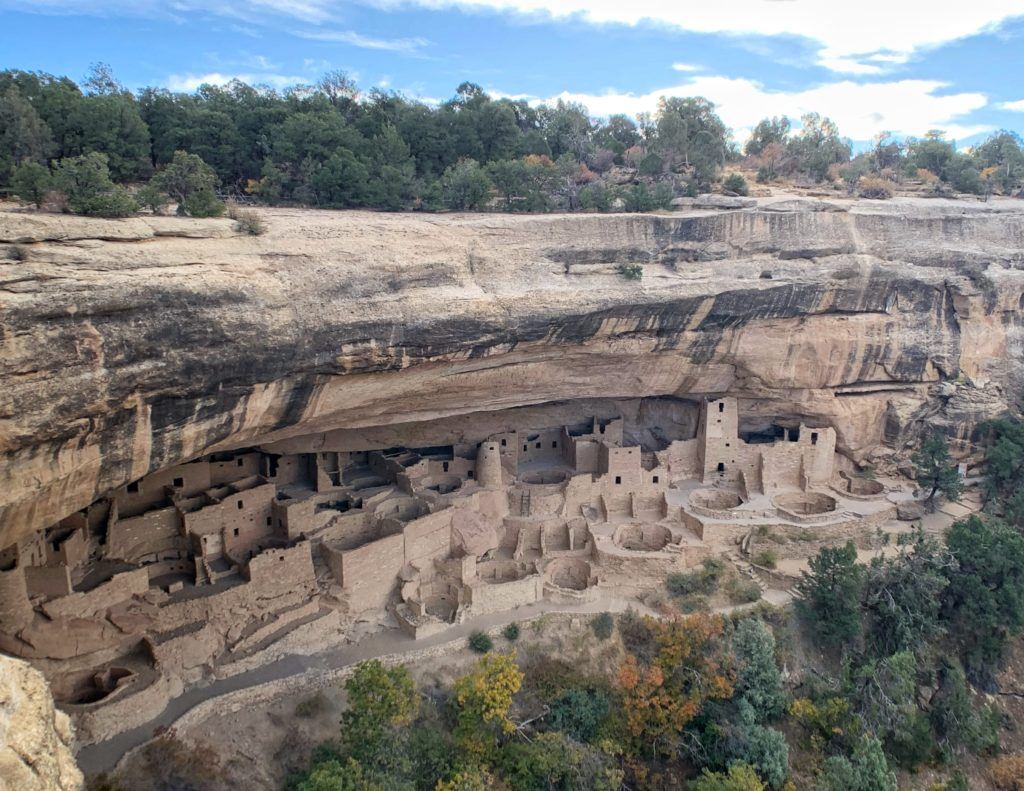
The Annual Military Pass is available to military members who are currently serving in any of the 4 major branches of the military. Coast Guard, Reserve, and National Guard members also are eligible. The Military Pass is also valid for the dependents of all active military personnel and/or family traveling in the same vehicle.
You’ll need to show your military I.D. card in person to qualify for your annual pass. You can get your Military Pass online or visit a location that issues passes. If you register for your Military Pass online there is a small processing fee.
In addition to the annual Military Pass for active members of the military, there’s also a Lifetime Military Pass for Veterans and Gold Star Families.
Veterans need only to show a valid I.D. indicating their status as a Veteran. These include the following:
- Unexpired Department of Defense Identification Card
- Veteran Health Identification Card
- Veteran ID Card
- Veterans designation on a state-issued US driver’s license or identification card
For Gold Star Families who are next of kin of an armed service member who has lost his/her life, it’s possible to obtain a voucher for free access to the National Parks.
In both cases, Veterans and Gold Star Families with the Lifetime Pass can use the pass for 1 private (non-commericial) vehicle and its occupants, up to 3 additional adults. Kids 15 years and younger are always free.
4. Make Your 4th-Grader Pay.
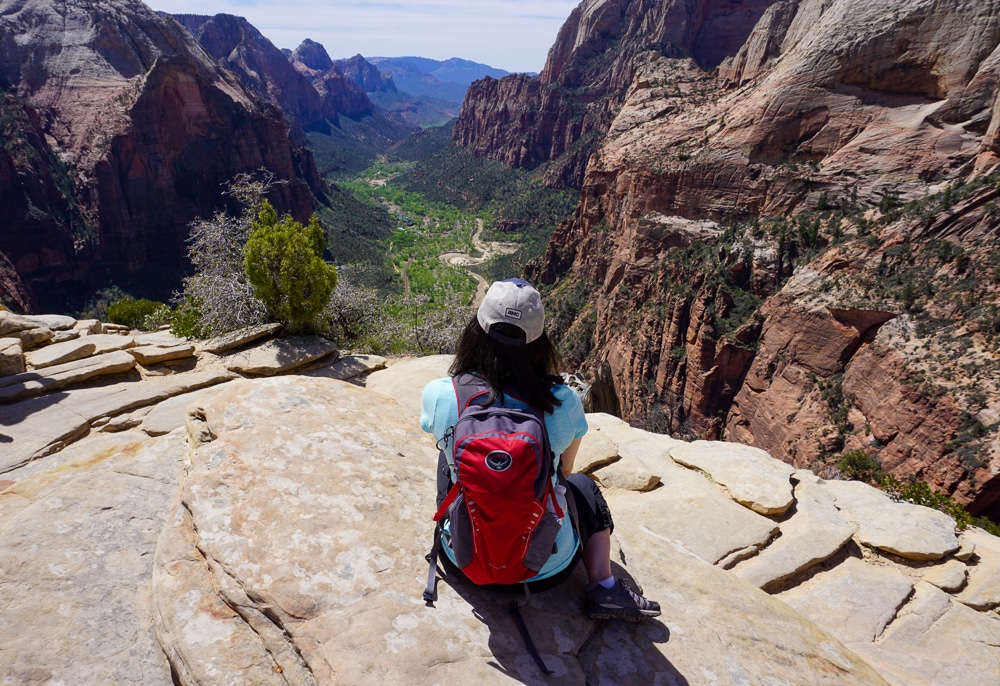
Isn’t it time the kids started to pull their own weight in the family?! 😉 If you have a 4th grader, this is the perfect way for he/she to start!
With the Annual 4th-Grade Pass, all fourth graders and their car of family members get free entry for the entire school year and the following summer (September-August) of their 4th-grade school year. Homeschool students are eligible when they turn 10 years old.
To get the free pass, go to the Every Kid Outdoors Website. Follow the steps to print out the paper voucher with your child’s unique code. Take the paper pass to a Federal Recreation area, such as a National Park, and get the free Annual 4th-Grade Pass.
5. Invite Grandma and Grandpa to visit the National Park, too!

Of course, a multi-generational trip to the National Parks is an unforgettable experience! It’s even better if grandma or grandpa have the Senior Pass.
The Senior Pass costs just $80 for all U.S. citizens and Legal Residents who are 62 years old and up.
Different from the America Beautiful Pass above, the pass is valid for the pass holder’s lifetime! And, it grants free admission to a car full of friends and family, up to 4 adults including the pass holder. The grandkids 15 years and younger are always free!
The Senior Pass also offers discounts on some of the expanded amenity fees, such as a campground reservation fee or a guided tour fee. Passholders should check at each National Park location to confirm all benefits.
6. Get an Access Pass for a Permanent Disability.
U.S. citizens and permanent residents of the United States with permanent disabilities are eligible for a Lifetime Access Pass to enter more than 2,000 sites managed by agencies like the National Parks Service. A licensed physician must confirm the disability.
As with the other passes on this list, you can get the pass online or in person. The online option includes a small processing fee.
7. Visit a Free National Park.
Some National Parks don’t charge anything to enter! You can hike, wildlife spot, and enjoy the natural beauty of these parks without adding any additional line item to your travel budget.
These free National Parks include:
- Biscayne National Park (Florida)
- Channel Islands National Park (California)
- Congaree National Park (South Carolina)
- Cuyahoga Valley National Park (Ohio)
- Gates of the Arctic National Park and Preserve (Alaska)
- Gateway Arch National Park (Missouri)
- Glacier Bay National Park and Preserve (Alaska)
- Great Basin National Park (Nevada)
- Great Smoky Mountains National Park (North Carolina and Tennessee)***
- Hot Springs National Park (Arkansas)
- Katmai National Park and Preserve (Alaska)
- Kenai Fjords National Park (Alaska)
- Kobuk Valley National Park (Alaska)
- Lake Clark National Park (Alaska)
- Mammoth Cave National Park (Kentucky)
- National Park of the American Samoa (American Samoa)
- New River Gorge National Park (West Virginia)
- North Cascades National Park (Washington)
- Redwood National Park (California)
- Virgin Islands National Park (Virgin Islands)
- Voyageurs National Park (Minnesota)
- Wind Cave National Park (South Dakota)
- Wrangell-St. Elias National Park (Alaska)
Great Smoky Mountains National Park is America’s most visited National Park. Each year, 10+ million visitors head to the park to bike, hike, see wildlife and waterfalls, fish, and leaf-peep in the fall.
Keep in mind that if you’re one of these visitors, the National Park is free to enter, however, all vehicles need a parking tag to park for more than 15 minutes. These parking tags are $5 for the day, $15 for the week, and $40 annually.
These parking tags can be bought at kiosks and Welcome Centers near the National Park. You can also order them online and print them at home or have them shipped.
8. Skip the Hotel.

All National Parks have areas available for camping and, as you might imagine, it’s much cheaper than paying a nightly hotel rate. Campground fees can be as little as $20 and include access to bathrooms and showers.
Particularly in gateway towns to National Parks, hotels can be pricier than you expect. There are often not many other options close to the park other than what is offered in these towns. Compare these prices with the campground fees for the National Park you want to visit and you’ll see instantly how you can save hundreds of dollars.
If you’ve never camped, understand that campgrounds need to be reserved in advance so be sure to check the availability for your travel dates. Also, always come with a waterproof tent. Investing in this one item is the difference between having a great first camping experience and one that you’d like to never think of again.
This guide has more beginner camping tips to help you prepare.
ProTip: If you decide to camp, plan to cook or prepare some or all of your meals at the campsite. This is a great cost-saver! See Tip #11 in this guide for more details on how to save on food.
9. Use Points and Miles on Gateway Town Hotels.
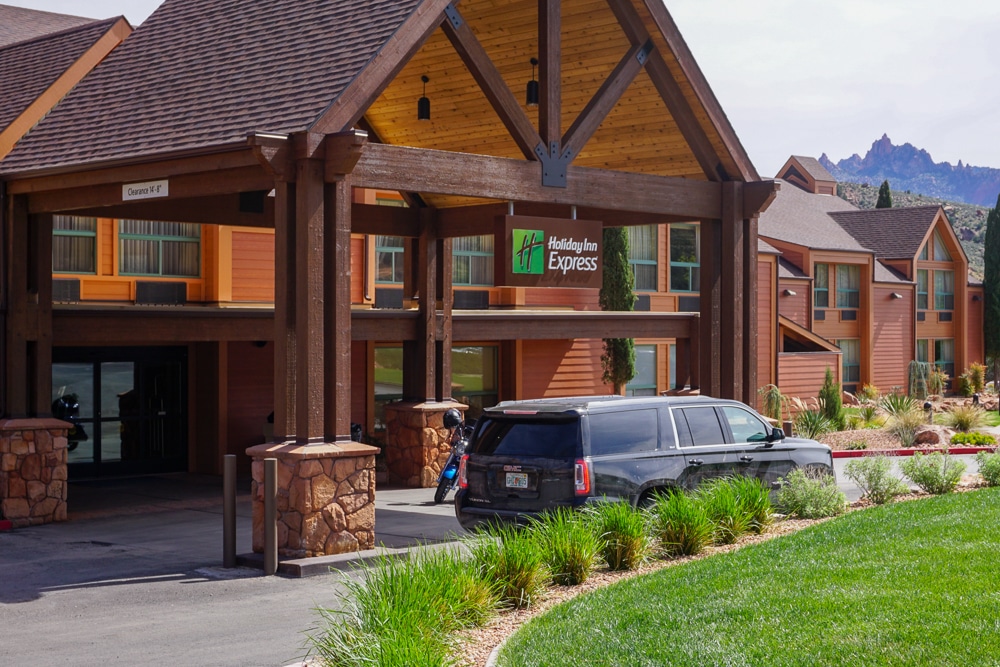
If you’re certain camping isn’t for you, there’s still a way to save on hotels near National Parks.
Many gateway towns have hotels that are part of brands with loyalty programs, like IHG, Marriott, Hilton, and Hyatt. Given the high prices of these hotels during peak times, it can be a surprisingly great value to redeem hotel points and free night awards to book a stay.
I did this for my trip to Zion National Park. I used IHG points to stay at the Holiday Inn Express in Springdale. Not only did I save a lot of money by using my points, but I was also at the National Park’s doorstep.
Take a look at this guide with popular National Park gateway towns and the hotels where you might be able to book an award stay.
10. Look for Deals on Campervans and RVs.
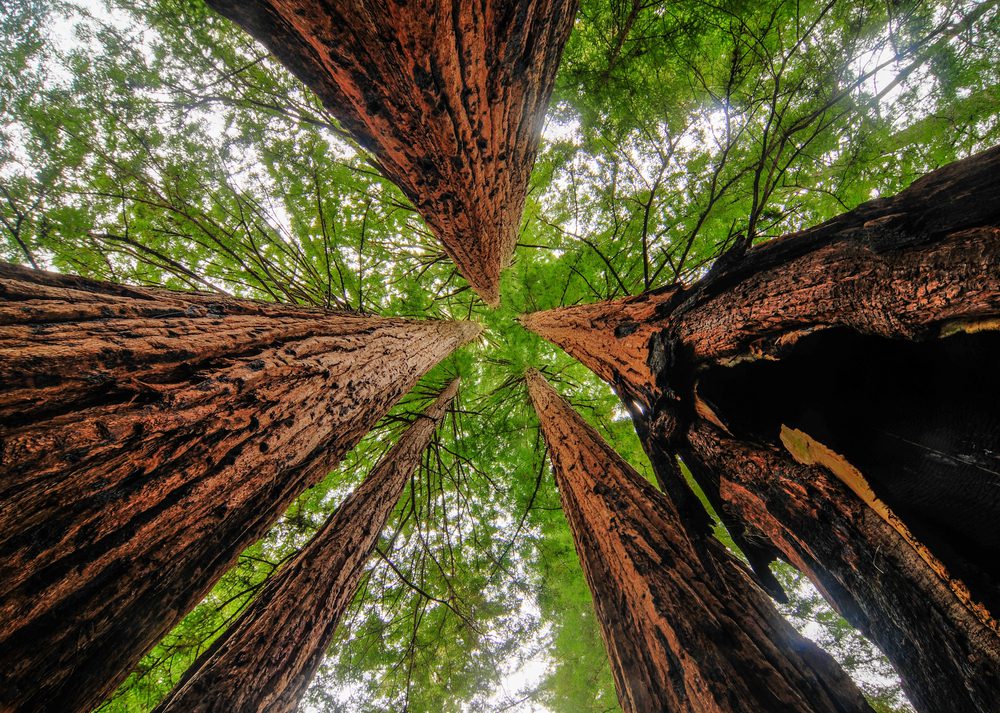
Coming with your own accommodations eliminates the need for a hotel. Campground fees for campervans or an RV hookup are generally more than just a campsite for tents, but it’s still significantly less than what a hotel might cost each night.
The trick is to try and save money on the campervan or RV for your National Parks trip. Companies like Escape Campervans run promotions at different points during the year. They also offer discounts for Military, teachers, students, medical responders, and medical personnel.
You could also look for relocation deals. This happens when companies need help moving their campervans and RVs to other places. In exchange for your help in driving the vehicle to the designated destination, you receive a discount while using it along the way. Companies like iMoova list these deals which change regularly.
ProTip: If you’re planning to rent a car for your National Parks trip, look for rental car companies like Budget and Hertz who have been known to offer relocation deals, as well.
11. Stock Up on Supplies Before Getting to the National Park
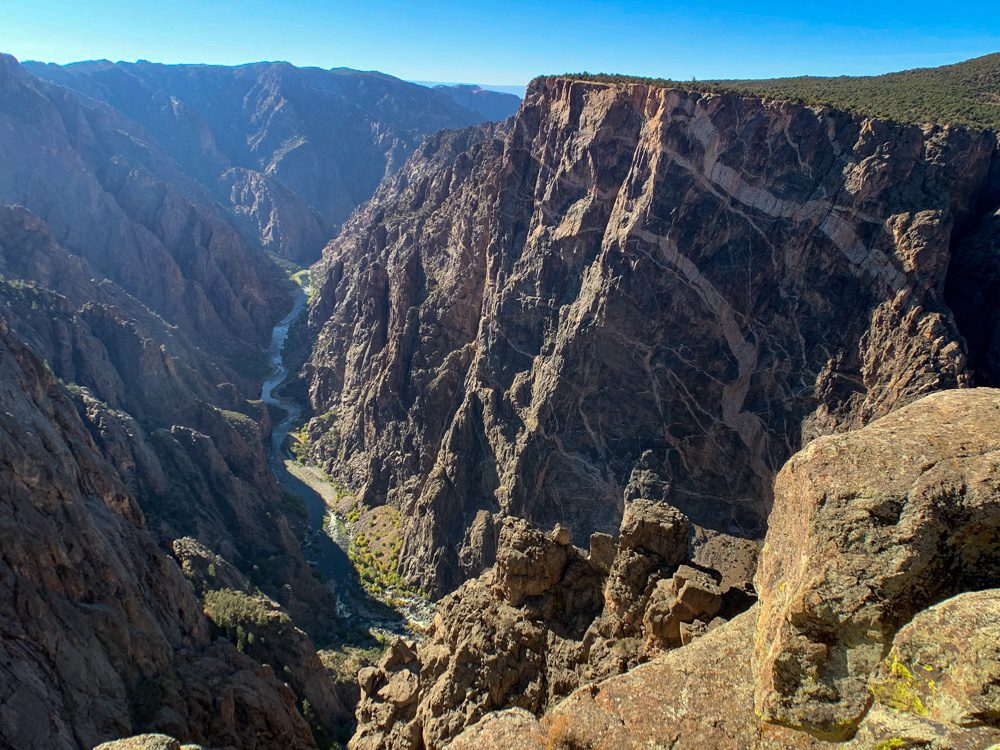
Everything from food to gear to gas will cost more in the National Park gateway towns. Sometimes this can’t be avoided because you have to fill the tank of your car before setting off to drive through remote areas of a State with few rest areas.
But it’s worth it to pick up snacks, bring your own food for meals, and buy drinks before arriving at the National Park. If you’re camping, you can save a ton by cooking your own meals. This savings increases when you grocery shop at home or perhaps near the airport where you pick up your rental car.
The same is true for hiking essentials and the right clothing. When planning what to wear hiking or on other outdoor excursions, get what you need before your trip. Gateway towns are likely to have gear shops but prices will certainly be higher than if you had looked for deals online or at shops near home.
12. Be Flexible with Your Travel Dates.
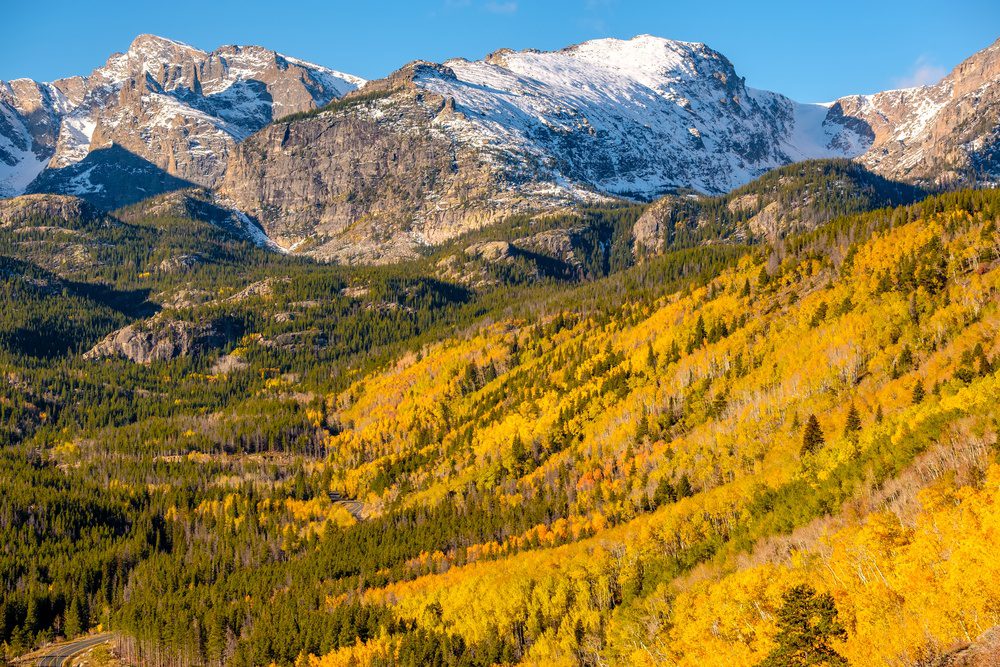
This is a tried and true money-saving tip no matter what type of trip you’re planning. If you can travel in the low season, you’ll inevitably get better prices for hotels, rental cars, campervans, and even activities than when demand is surging during peak season.
Gateway town hotels, especially, will be significantly less during off-peak months and seasons. This doesn’t necessarily mean visiting in winter, although National Parks can be quite beautiful during this time. Think instead of periods right after school breaks and popular holiday weeks when most people will be ending their vacations.
13. Join Free National Park Activities.
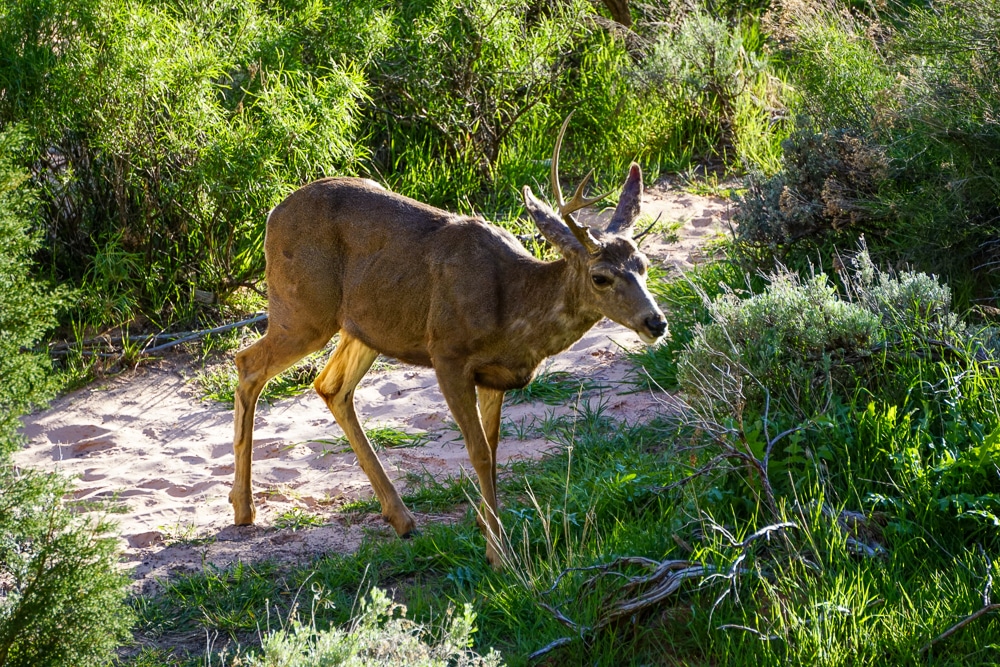
Many National Parks offer ranger-led programs at different times throughout the year. These could include guided hikes to learn more about the National Park’s plants and wildlife or it could be a guided night-sky talk to enjoy spectacular views of the stars.
Each National Park offers its own schedule of activities and you might be surprised at how diverse, family-friendly, and even hands-on many of these activities are. Once you decide which National Parks are on your itinerary, look at the activities at those specific parks.
14. Visit State Parks or National Monuments Instead.
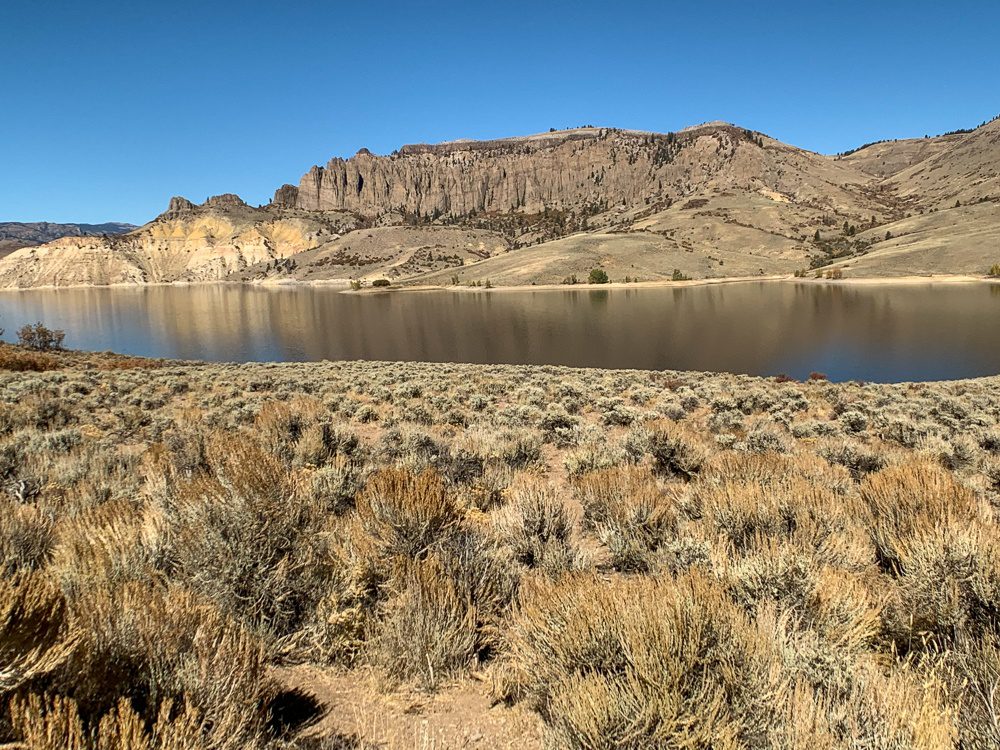
The America the Beautiful Pass includes entry to National Monuments, but like some National Parks, not all of them have fees. You could visit Grand Staircase-Escalante National Monument in Utah for free. Canyon de Chelly is another freebie and fits perfectly into an Arizona road trip.
You’ll also find many State Parks that are just as beautiful as National Parks. I’ve visited a few, like Letchworth State Park in upstate New York, and wondered how these parks weren’t considered National Parks! Other beautiful State Parks include Table Rock State Park in South Carolina, Custer State Park in South Dakota, and Baxter State Park in Maine.
State Parks aren’t necessarily free to enter (although some are), but their fees are generally less than National Parks. And since you’re not staying in a National Park gateway town, prices for hotels can be comparatively lower.
How to Save Money at National Parks
There are so many ways to cut your costs when you’re planning a National Park trip. Whether you’re eligible for a National Parks pass or you go with the America the Beautiful Pass, there are plenty of ways to save on park entrance fees.
Our beautiful National Parks are national treasures to protect and enjoy. And, using these strategies, you can plan the National Park trip of your dreams even when you’re working with a tight budget.
If you need inspiration, check out the 10 most visited U.S. National Parks to get started.
How do you save money at the National Parks?
Like this post? Please share it on social media using the share button below!

